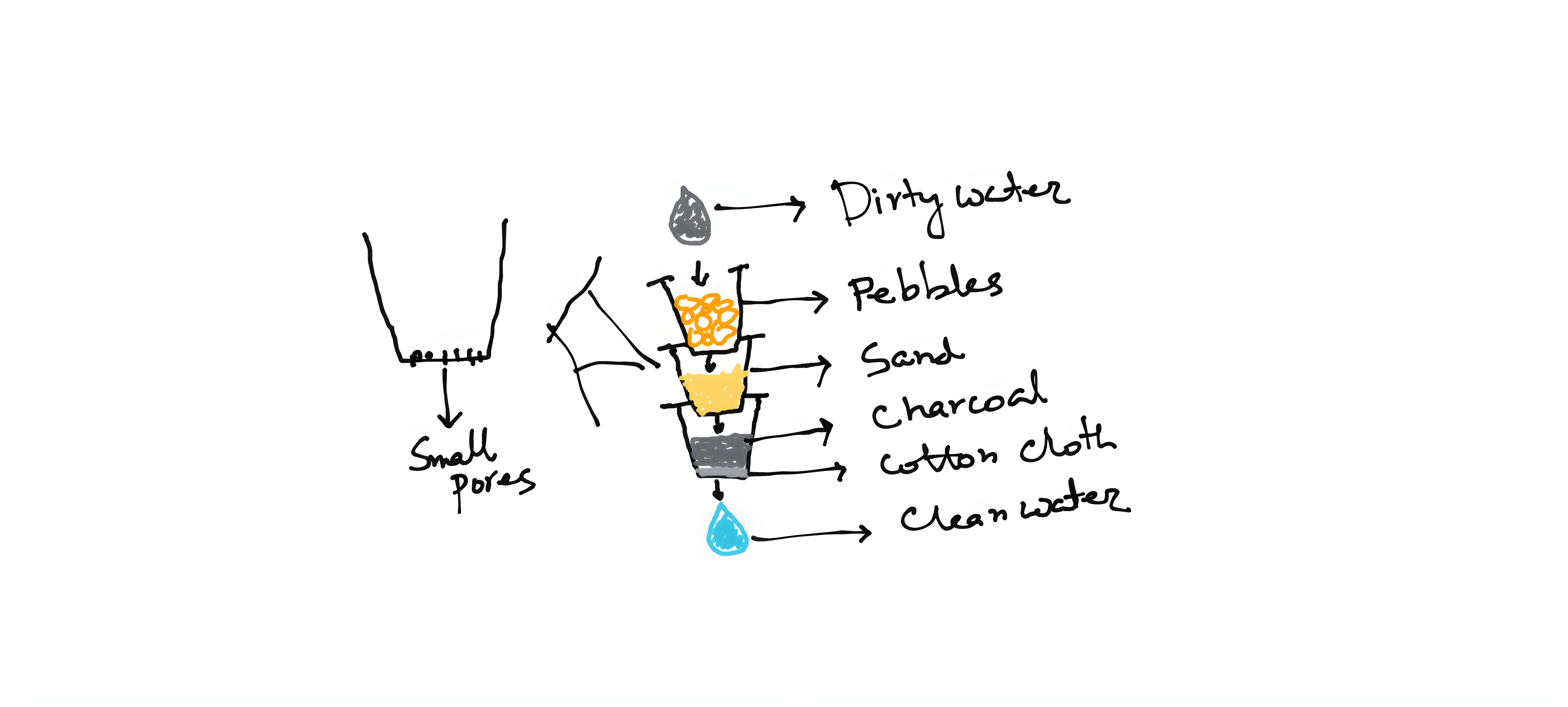Water filter device
Designed for – Class III-X
Time – 30 minutes
Objectives
Water pollution is one of the threats in both urban and rural areas in India. Here, the experiments will guide the students to visualize how water filtration works using everyday materials.
Prerequisites
Before the beginning of the experiment, briefly describe the types of organic and inorganic pollutants responsible for polluted water. Different types of water filtration techniques (like reverse osmosis, ultrafiltration, and passive filtrations) and their limitations can be discussed.
Tools required
Three plastic glasses; one cup of sand, pebbles (half an inch or less), and a cup of charcoal powder. You can use a hammer to break the charcoal into small pieces. A piece of cotton cloth; one cup of soil and one glass of water; a needle; a pencil and two glass jars to compare polluted and filtered water.
 Methods
Methods
Create multiple pores in the base of all three glasses using a pencil or needle. Now place the cotton cloth piece under one glass and add charcoal into the glass. Put soil and pebbles into two different glasses and put these two glasses over the glass with charcoal. So, it will create a cylindrical system with charcoal at the bottom, followed by sand and pebbles. Add the soil to the water to create a polluted water solution. Now pour some portion of the dirty water over the top of the cylinder so that water will go through the pebbles layer first then sand, charcoal and finally the cotton cloth. Collect the water and compare the color with the dirty water. Several variations of the experiments can be performed. A Two layers of pebbles, sand and charcoals can be used instead of one. Also, filtration can be done using single-stage pebbles, sand and charcoal individually) and then the filtered water can be compared with three-stage filtration.
Expected results
When the water passes through the three-layer filter, water gets cleaned at every step. The pebbles clean the large particles like twigs, whereas the sand and the charcoal clean the smaller particle like dirt and some bacteria. So water should look clearer in each stage. The students will observe the visual changes in color before and after filtration.
Pro-tips
Adding alum to the dirt water helps to coagulate smaller dirt particles into bigger particles. Before the filtration, add alum solution or alum stone to the water and stir to observe the coagulation of dirt. You can also use a mobile color picker app to quantify the cleanliness before and after treatment.
